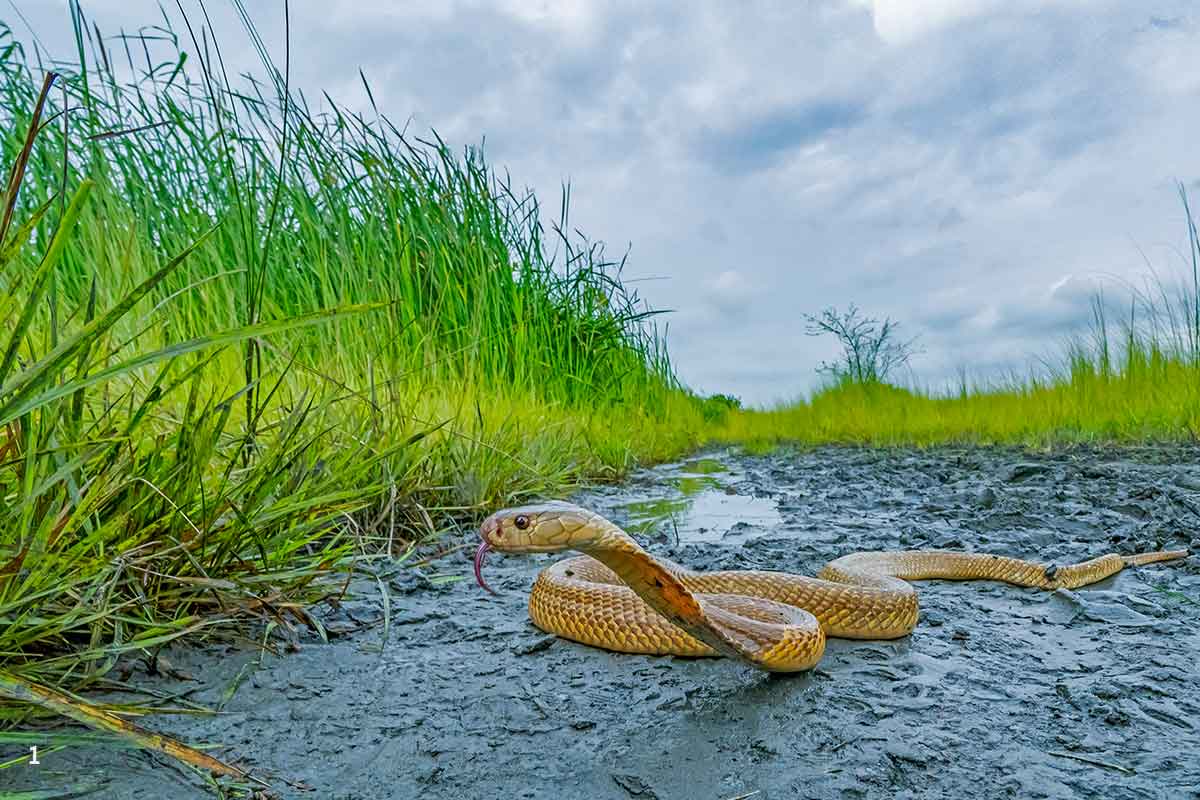 Listen to this article
•
15:34 min
Listen to this article
•
15:34 min
The East Kolkata Wetlands (EKW), a 125-sq-km naturally occurring wetland, lies on the eastern fringes of the Kolkata Metropolitan Region. “These waterbodies are important. They impact the microclimate of the local area and act as carbon sinks, says Dr Mohit Ray, an environmental activist who has campaigned extensively to save Kolkata’s waterbodies. By absorbing atmospheric carbon emissions, they reduce the greenhouse effect and human-induced climate change.
Besides the EKW, the other important waterbodies in and around the city are the Rajarhat wetlands, Santragachi Jheel, and Dankuni wetlands. While Rajarhat, an extension of the EKW, lies within the city limits, the other two are a short drive away. Santragachi Jheel is about 30 kilometres west of Rajarhat in the Howrah district. Dankuni, an extensive marshland interspersed with continuous patches of reed beds and vegetation, is 20 kilometres north of Santragachi in the Hooghly district.
Among all these wetlands, only the EKW and Santragachi Jheel are directly protected by law. However, the West Bengal Inland Fisheries Act, 1984 (amended in 1993) states that if any waterbody can be used for pisciculture and aquaculture, then it must be used for that purpose only. Additionally, “the West Bengal Land Reforms Act says that if you fill up any waterbody (with rock, debris, or other solid materials), then you have to create a compensatory waterbody. These laws help protect waterbodies at the state level,” says Meghna Banerjee, lawyer and co-founder of the Human & Environment Alliance League (HEAL).
Protecting these wetlands is important because they provide Kolkata with numerous ecological benefits and support diverse populations of insects, birds, and animals. “Not only do wetlands support waterfowl like ducks, but also birds that breed in the reeds and grasses, like munias and buntings,” says Sujan Chatterjee, secretary of Birdwatchers’ Society, who also leads the East India Birding tour company.



Two birds that are widespread in Rajarhat’s reed beds are the plain prinia (Prinia inornata) (1) and the tricoloured munia (Lonchura malacca) (2). Rajarhat is also home to resident ducks. It is the breeding ground for the cotton pygmy goose (Nettapus coromandelianus) and other waterbirds such as the bronze-winged jacanas (Metopidius indicus). Red munia (Amandava amandava), ashy-crowned sparrow lark (Eremopterix griseus), and striated grassbird (Megalurus palustris) are other residents. The bristled grassbird (Schoenicola striatus), listed as “Vulnerable” on the IUCN Red List, has also been sighted here.
Reports of birds dying due to poaching and grass burning are rising in this wetland. The grass here is burnt frequently (mainly in winter), resulting in charred bird nests and loss of habitat and food for the survivors.



Travelling 30 minutes north of Santragachi Jheel, the vast contiguous stretches of Dankuni wetlands were, until recently, not legally protected. “During our inspection and visits, in addition to rampant encroachment of the Dankuni wetland complex, our team came across numerous bird trapping nets. We did a local campaign and worked with the forest department to curb poaching and hunting here,” says Banerjee.
But encroachment remains Dankuni’s main challenge. “We have seen thousands of dumpsters filling up these wetlands. A carcass of the golden monitor lizard (Varanus flavescens), a species protected under Schedule I, Wildlife Protection Act, 1972, was crushed by a dumper truck here,” says Banerjee. These wetlands were being converted for the construction of factories and real estate at a tremendous pace. People United for Better Living in Calcutta (PUBLIC) filed a lawsuit to stop the illegal reclamation of these wetlands, and the court directed a government-appointed committee to protect the Dankuni wetlands. But PUBLIC is not satisfied with the working of this committee. It involved the National Green Tribunal (NGT), which has granted interim protection to these wetlands and placed an embargo on filling activities. The NGT also directed the District Magistrate and the Superintendent of Police of Hooghly district to prevent any reclamation of waterbodies in the area identified by the petitioners. In its final order of May 2022, the NGT has granted protection to all wetlands in the state, having an area of over 2.25 hectares, including Dankuni wetland.
Dankuni supports mammals like the fishing cat (Prionailurus viverrinus), the state animal of West Bengal. Reptiles like the monocled cobra (Naja kaouthia) (1) and the Indian flapshell turtle (Lissemys punctata) (2) share these spaces.
There are about 350 species of birds in Dankuni. Ground-dwelling birds like red-wattled lapwing (Vanellus indicus), common snipe (Gallinago gallinago), paddy field pipit (Anthus rufulus) are seen in large numbers, as are bitterns, warblers, and harriers. In 2012, a yellow-breasted bunting (Emberiza aureola) was also spotted in this wetland. This critically endangered bird is a native of Eastern Europe, Russia, Mongolia, Kazakhstan and winters in southern China, Thailand, Myanmar, Vietnam, and the Indian subcontinent.
Wetlands are areas rich in biodiversity. Many insects live in the habitat’s leaves and flowers and support larger creatures and other lifeforms. For instance, the Mylabris quadripunctata (2), from the blister beetle family, is a pollinator. Other pollinators, like the handmaiden moth (Amata bicincta), serve as a meal for lynx spiders (3). Water striders are known predators of mosquito larvae and hence keep the area’s mosquito population in check (4).
Some birds, like cattle egrets and glossy ibises, eat fish, tiny frogs, worms, and insects. A healthy population of spiders, water striders, and other insects ensures that birds frequent these wetlands.

















